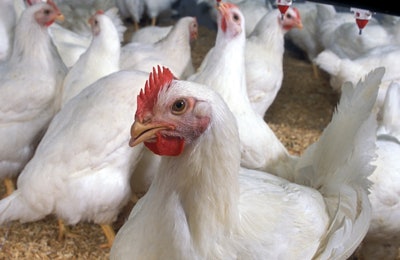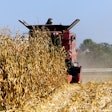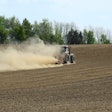
Marek’s disease is a serious concern in broiler production that can lead to significant economic losses. Taking preventative measures against the viral disease, like vaccination, are crucial to maintaining a healthy and productive flock.
The disease is highly contagious and can lead to several severe health problems for the birds, including paralysis, tumors, blindness and death. Marek’s disease is most prevalent in chickens, although it is also found in turkeys. The virus is spread through bird feed, bedding material, bird droppings, feathers and dead skin. There is currently no effective treatment and infected birds are condemned. The disease costs the poultry industry an estimated $1 billion each year.
To effectively prevent Marek’s disease in commercial poultry, the most important practices are vaccination, rigorous hygiene and strict biosecurity measures. In unvaccinated flocks, mortality rates can reach up to 50%.
Understanding how Marek’s disease mutates
One of the major challenges of controlling Marek’s disease is how quickly the virus can mutate. A vaccine that can prevent one strain of the virus may quickly become ineffective as new strains are constantly emerging.
A new research study published in the journal Viruses, could provide insight into the mechanism that allows Marek’s disease to become more severe, rendering vaccines ineffective.
Marek’s disease in commercial poultry in Nigeria is common, primarily because of challenges in vaccine access and administration. At many operations, chicks are given a strong vaccine against Marek’s vaccine in ovo and then revaccinated with a weaker vaccine later in life due to unclear vaccination histories and a lack of standardized vaccination programs.
Despite revaccination happening in many cases, the number of outbreaks in the country still increased, resulting in significant losses across all scales of poultry operation.
“If it’s in a meat type bird, and a tumor is observed as it goes down the line, the entire bird is just condemned. At that point, a producer has lost every bit of investment,” said Mark Parcells, a University of Delaware professor of molecular virology and one of the co-authors of the study.
The results of the study revealed that many of Marek’s disease occurrences were caused by a mutation in an oncogene called meq. This oncogene can also mediate resistance to vaccines by overcoming the early immune response of the birds.
“In this case, it looks like what happened was that the field strain of the virus that was able to break through the vaccine at the hatchery immediately broke through this weaker vaccine,” Parcells explained.
“It did so by gaining mutations in a particular gene that we've seen for the last 20 years in the U.S. wherever there's been vaccine breaks – where even though producers are vaccinating, they're starting to get birds with tumors."
The findings could help producers better understand if a higher virulence strain of Marek’s disease is affecting their flocks or if the chickens weren’t vaccinated properly in the hatchery, which could ultimately result in better control of Marek’s disease.
New concerns about immunosuppression
For the most part, the U.S. poultry industry has successfully controlled the tumor-causing effects of Marek's disease through decades of vaccine development, but a more insidious problem has emerged more recently: immunosuppression that leaves flocks vulnerable to secondary infections without producers realizing the underlying cause.
While current vaccination strategies have dramatically reduced tumor-related condemnations at processing plants, recent research indicates that approximately 30% of field samples in the U.S. test positive for very virulent plus (VV+) strains of the virus that cause significant immunosuppression despite effective tumor prevention.
"The industry thinks they have this under control because the vaccines are working against tumor formation," explained Dr. Rick Phillips, director, Key Account Veterinarians, Boehringer Ingelheim Poultry. "But what they haven't noticed is the immunosuppressive effect that's creating secondary bacterial and viral infections in flocks."
Broiler breeders face greater risks of organ tumors and peripheral nerve damage due to their longer lifespan, while broilers typically present with skin tumors when affected. The immunosuppressive effects impact both sectors, making the new vaccine technology particularly valuable for protecting flock health across all production systems.
The industry has now introduced chimera vaccine technology that combines four different viruses into a single product designed to protect against both tumor formation and immunosuppressive effects. This new approach represents a significant advancement in addressing the hidden immune system damage that traditional vaccines cannot prevent.
A “biological arms race”
Marek's disease continues to pose a significant threat to the poultry industry. The herpes virus-based disease has evolved into what Eric Shepherd, DVM, MS, MAM, dACPV, Sr. technical services veterinarian, Zoetis, describes as a "biological arms race," constantly adapting to evade vaccines and becoming more pathogenic over time.
“Every time we have an issue with Marek’s disease, we develop a vaccine and Marek’s figures out how to evade it,” he added. Even though we have very good vaccines for prevention of this disease, Marek’s disease is always looking for an opportunity to circumvent this. This means handling, mixing and application of your vaccine is crucial to the success of your program.”
In ovo vaccination has emerged as the most effective prevention strategy, with timing being critical. Vaccinating during late embryonic development at 18-19 days jump-starts the bird's immune system before hatching.
For longer-lived birds like primary breeders, a combination approach using both in ovo and day-of-age vaccination creates an even stronger immune response. Some regions require multiple vaccine serotypes to combat particularly aggressive wild-type Marek strains in the field.
A dangerous misconception has emerged that Marek's disease is no longer a significant threat leading some to believe vaccination is no longer necessary. However, the virus remains ubiquitous in commercial poultry environments, and birds are typically exposed immediately upon placement.
“Since Marek’s is everywhere and birds will be infected, it is paramount to have a solid vaccination program to prevent clinical disease and to routinely monitor the effectiveness of that program,” Shepherd said.



















